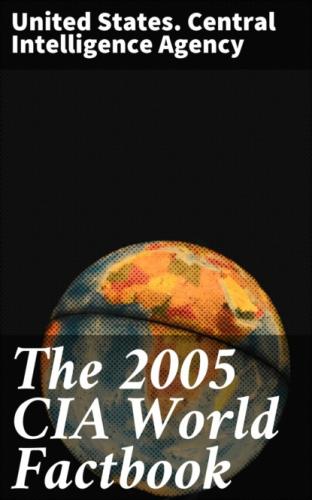fisheries median line; Iceland, the UK, and Ireland dispute
Denmark's claim that the Faroe Islands' continental shelf extends
beyond 200 nm
This page was last updated on 20 October, 2005
======================================================================
@India
Introduction India
Background:
The Indus Valley civilization, one of the oldest in the world,
dates back at least 5,000 years. Aryan tribes from the northwest
invaded about 1500 B.C.; their merger with the earlier Dravidian
inhabitants created the classical Indian culture. Arab incursions
starting in the 8th century and Turkish in the 12th were followed by
those of European traders, beginning in the late 15th century. By
the 19th century, Britain had assumed political control of virtually
all Indian lands. Indian armed forces in the British army played a
vital role in both World Wars. Nonviolent resistance to British
colonialism led by Mohandas GANDHI and Jawaharlal NEHRU brought
independence in 1947. The subcontinent was divided into the secular
state of India and the smaller Muslim state of Pakistan. A third war
between the two countries in 1971 resulted in East Pakistan becoming
the separate nation of Bangladesh. Despite impressive gains in
economic investment and output, India faces pressing problems such
as the ongoing dispute with Pakistan over Kashmir, massive
overpopulation, environmental degradation, extensive poverty, and
ethnic and religious strife.
Geography India
Location:
Southern Asia, bordering the Arabian Sea and the Bay of Bengal,
between Burma and Pakistan
Geographic coordinates:
20 00 N, 77 00 E
Map references:
Asia
Area:
total: 3,287,590 sq km
land: 2,973,190 sq km
water: 314,400 sq km
Area - comparative:
slightly more than one-third the size of the US
Land boundaries:
total: 14,103 km
border countries: Bangladesh 4,053 km, Bhutan 605 km, Burma 1,463
km, China 3,380 km, Nepal 1,690 km, Pakistan 2,912 km
Coastline:
7,000 km
Maritime claims: territorial sea: 12 nm contiguous zone: 24 nm exclusive economic zone: 200 nm continental shelf: 200 nm or to the edge of the continental margin
Climate:
varies from tropical monsoon in south to temperate in north
Terrain:
upland plain (Deccan Plateau) in south, flat to rolling plain along
the Ganges, deserts in west, Himalayas in north
Elevation extremes:
lowest point: Indian Ocean 0 m
highest point: Kanchenjunga 8,598 m
Natural resources:
coal (fourth-largest reserves in the world), iron ore, manganese,
mica, bauxite, titanium ore, chromite, natural gas, diamonds,
petroleum, limestone, arable land
Land use:
arable land: 54.4%
permanent crops: 2.74%
other: 42.86% (2001)
Irrigated land:
590,000 sq km (1998 est.)
Natural hazards:
droughts; flash floods, as well as widespread and destructive
flooding from monsoonal rains; severe thunderstorms; earthquakes
Environment - current issues:
deforestation; soil erosion; overgrazing; desertification; air
pollution from industrial effluents and vehicle emissions; water
pollution from raw sewage and runoff of agricultural pesticides; tap
water is not potable throughout the country; huge and growing
population is overstraining natural resources
Environment - international agreements:
party to: Antarctic-Environmental Protocol, Antarctic-Marine Living
Resources, Antarctic Treaty, Biodiversity, Climate Change, Climate
Change-Kyoto Protocol, Desertification, Endangered Species,
Environmental Modification, Hazardous Wastes, Law of the Sea, Ozone
Layer Protection, Ship Pollution, Tropical Timber 83, Tropical
Timber 94, Wetlands, Whaling
signed, but not ratified: none of the selected agreements
Geography - note:
dominates South Asian subcontinent; near important Indian Ocean
trade routes
People India
Population:
1,080,264,388 (July 2005 est.)
Age structure:
0–14 years: 31.2% (male 173,634,432/female 163,932,475)
15–64 years: 63.9% (male 356,932,082/female 333,283,590)
65 years and over: 4.9% (male 26,542,025/female 25,939,784) (2005
est.)
Median age:
total: 24.66 years
male: 24.64 years
female: 24.67 years (2005 est.)
Population growth rate:
1.4% (2005 est.)
Birth rate:
22.32 births/1,000 population (2005 est.)
Death rate:
8.28 deaths/1,000 population (2005 est.)
Net migration rate:
−0.07 migrant(s)/1,000 population (2005 est.)
Sex ratio:
at birth: 1.05 male(s)/female
under 15 years: 1.06 male(s)/female
15–64 years: 1.07 male(s)/female
65 years and over: 1.02 male(s)/female
total population: 1.06 male(s)/female (2005 est.)
Infant mortality rate:
total: 56.29 deaths/1,000 live births
male: 56.86 deaths/1,000 live births
female: 55.69 deaths/1,000 live births (2005 est.)
Life expectancy at birth:
total population: 64.35 years
male: 63.57 years
female: 65.16
